One of the most asked questions is “What pressure canner should I buy?” I wanted to report the information about the type of pressure canners that are available and the comparisons that I found in the manufacturers specifications.
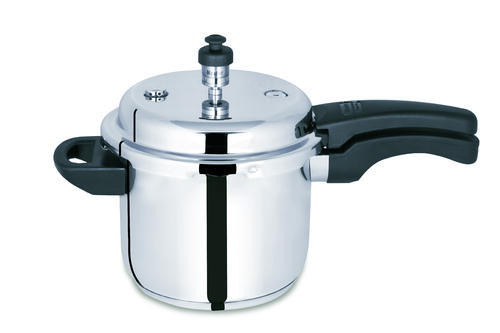
I want to make sure that there was first an understanding about a few basic features of a pressure canner that hold true for all of them. First, this is a canner and not a cooker. They are specifically built to withstand the type of canning that we are doing and have features that make it easy for a canner to do any safe recipe. A pressure cooker is a pot that has a single weight on the top that is set for 15 lbs of pressure. It looks like the pot at the right.
Most of the recipes do not require this much pressure for canning and you will over cook your recipes and not get the quality product you desire.
Second, all of the specification for the pressure canners are based on the fact that you will be using a regular mouth canning jar and not a wide mouth. I do know that you will lose the standard capacity in the pressure canner if you use a combination of wide and regular mouth jars. Please take that into consideration and don’t freak out if you don’t get full capacity when your canner arrives.
Third, all of the pressure canners either have a dial gauge
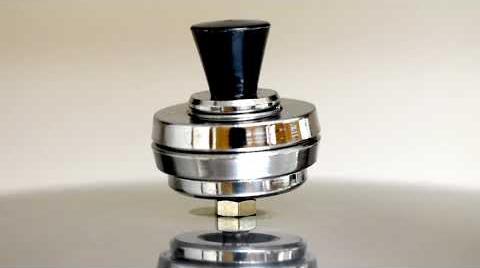
or a weighted gauge. (both shown at right)
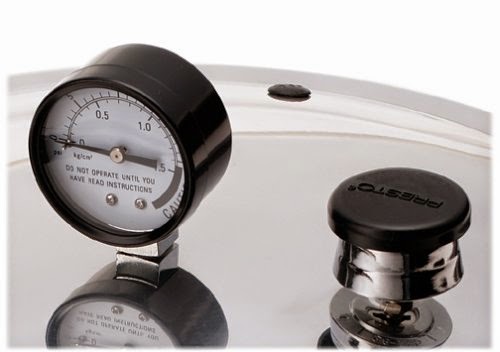
The difference is that the weighted gauge measures only three different pounds of pressure, 5, 10, and 15. You can stack the weights on top of each other for additional poundage. Most canning recipes will show the proper amount of pounds for a dial versus a weighted gauge. For the dial gauge you will have to have it tested each year to make sure that the pressure is still accurately measured.
Below is a chart which contains the research that I have done for three of the most popular brands available on the market. These can be found at a “few” retail locations but all are available online and a link below to a reasonable price site that I found. That price shown is without shipping and handling as some of the sites I looked at had free shipping for the more expensive brands.
I would love comments following this post if you own one of these canners to help out the other readers in making a decision. Many of you know which one I use, but to be fair I want to be impartial and see what the feedback is on these products.
| Manufacturer | Size | Price | Style | Capacity | Measurements |
| Presto | 23 quart | ~ $82 | Dial Gauge | 20 pints (double stack)/7 quarts | 15.4×15.1×14.8 |
| Presto | 16 quart | ~$72 | Dial Gauge | 10 pints/7 quarts | 14.8×14.8×11.9 |
| All American | 21 1/2 quart | ~ $200 | Dial Gauge | 19 pints (double stack)/7 quarts | 16x15x17 |
| All American | 15 1/2 quart | ~$180 | Dial Gauge | 10 pints/7 quarts | 16x15x14 |
| Mirro | 22 quart | ~$80 | Weighted Gauge | 16 pints (double stack)/5 quarts | 17x14x17 |
| Mirro | 16 quart | ~$68 | Weighted Gauge | 9 pints/7 quarts | 10.75×8.5×12 |
The capacity for the pints is shown as a single layer at the bottom of the canner sitting on the rack or what is called a “double stack” which is done by filling the bottom of the canner with jars, purchasing an additional rack from the manufacturer, placing it on the top of the jars and then filling the second rack with pint jars as well. This can also be done with half pint jars. The larger canners have the ability to double stack.I also listed the measurements of the canner because many of you may have a microwave over the top of your stove. Without proper clearance from the top of the burner to the bottom of the microwave the canner won’t fit. Make sure to measure your dimensions before you select a canner.The difference between the Dial and Weighted gauge is mostly preference. The dial gauge gives you a “visible” read of your current pounds of pressure where as the weighted gauge will make a rocking noise and will only be audible. All types of pressure canners have a venting system and some form of safety lock or plugs built into the canner.Last, the Mirro and Presto canners have a gasket in the lid that helps secure
the seal on the canner. The gasket will wear out after a few years and will need to be replaced. Both companies sell replacement part for their canners. The All-American is metal on metal and doesn’t have a gasket.Now for some things to think about:
- My intention is to make large batches of soups, sauces, and stews to store for the season and I really only will be storing for two of us so pint size jars are great. Having the ability to double stack in my canner would be great though I may not do it every time.
- My intention is to make the occasional chili and canning meat and will do those in quart size since I have so many mouths to feed.
I hope that gives you some additional information that may help in making a decision about which brand you may want to purchase. If you already own one of these canners please comment below about any hints or tips that will help other people make their choice.
One additional comment that Mygarten pointed out for this post. Some pressure canners are not approved to work on ceramic or glass top stoves. Here is the research on glass and flat top stoves, “Flat Top & Glass Ranges – Is Canning ok?” It would be good to call your manufacturer to get more details if you have this kind of stove.






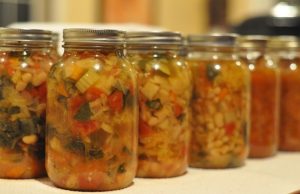
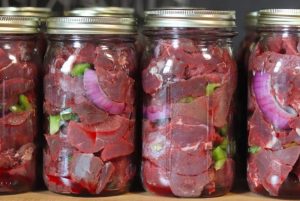
Leave a Reply